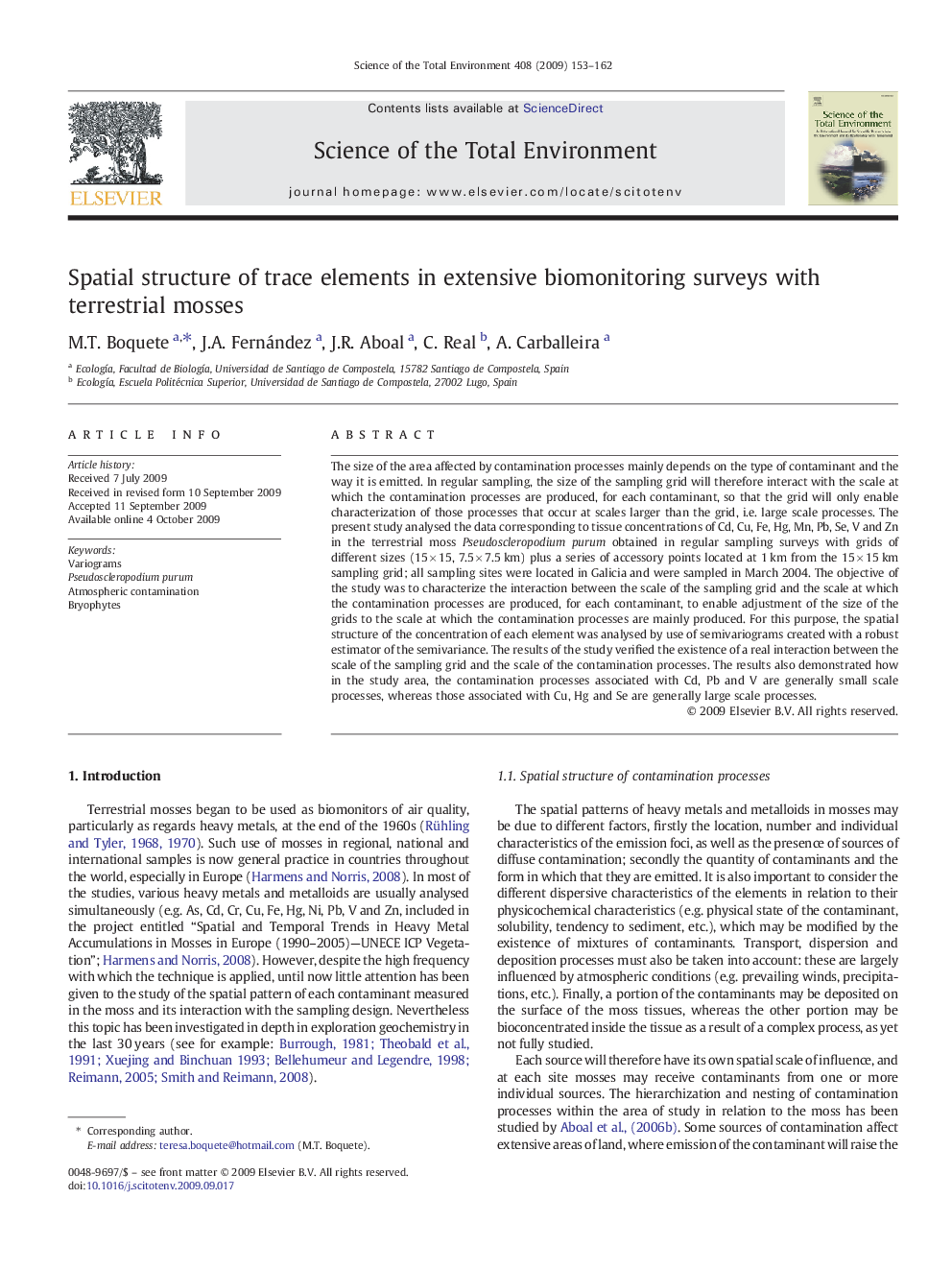| Article ID | Journal | Published Year | Pages | File Type |
|---|---|---|---|---|
| 4432275 | Science of The Total Environment | 2009 | 10 Pages |
The size of the area affected by contamination processes mainly depends on the type of contaminant and the way it is emitted. In regular sampling, the size of the sampling grid will therefore interact with the scale at which the contamination processes are produced, for each contaminant, so that the grid will only enable characterization of those processes that occur at scales larger than the grid, i.e. large scale processes. The present study analysed the data corresponding to tissue concentrations of Cd, Cu, Fe, Hg, Mn, Pb, Se, V and Zn in the terrestrial moss Pseudoscleropodium purum obtained in regular sampling surveys with grids of different sizes (15 × 15, 7.5 × 7.5 km) plus a series of accessory points located at 1 km from the 15 × 15 km sampling grid; all sampling sites were located in Galicia and were sampled in March 2004. The objective of the study was to characterize the interaction between the scale of the sampling grid and the scale at which the contamination processes are produced, for each contaminant, to enable adjustment of the size of the grids to the scale at which the contamination processes are mainly produced. For this purpose, the spatial structure of the concentration of each element was analysed by use of semivariograms created with a robust estimator of the semivariance. The results of the study verified the existence of a real interaction between the scale of the sampling grid and the scale of the contamination processes. The results also demonstrated how in the study area, the contamination processes associated with Cd, Pb and V are generally small scale processes, whereas those associated with Cu, Hg and Se are generally large scale processes.
